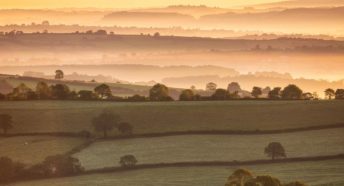Life lines: Hugh Warwick on why hedgerows are vital for people and wildlife
Our hedgerows are a vital network for wildlife, an icon of Englishness, and our allies in everything from carbon capture to flood protection. So, asks ecologist Hugh Warwick, why are they so frequently neglected?
I have been to Africa and seen the majestic wildlife at play. I have walked through the old-growth forests of British Columbia and swum over reefs in the Caribbean. Yet it is not to those wild spaces that my thoughts go, when asked about what makes me happiest.
For me, that place is the hedgerow. In particular, it is the hedgerow in spring, probably in Devon: a time and place where the single word ‘green’ proves to be the most inadequate adjective in the English language.
When the hawthorn has leapt in to fill the blossom-gap left by the retreat of blackthorn, when the migrant and local birds fight most beautifully in the morning, when the evenings see the bats navigate and feed along these lines and there is snuffling life at the base, too; then my heart sings.
Countryside icons
My love for hedgerows is an inevitable consequence of my life as an ecologist who has spent over 30 years working with one particular creature, the hedgehog. The name of the nation’s favourite mammal reflects that it is the most iconic of the many species that ‘hog the hedges’.
While the hedgehog wins the vote for the country’s nature icon every time there is a poll, it is the hedgerow that probably features most strongly in our imagining of an ideal countryside. For many people, they are the epitome of Englishness. Perhaps more iconic than the white cliffs of Dover, they knit together our land. They require us to make them and maintain them, but are, in themselves, as wild as we let them be. So cherished, so loved; and yet now, so often abandoned.
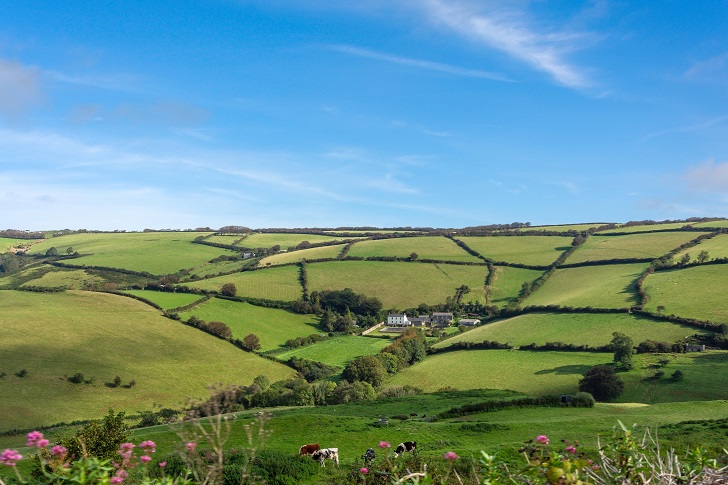
As one war ended in 1945, so another began. An assault on our countryside, driven by the need to feed a hungry population, and the simultaneous advancements in mechanical, biological and chemical engineering, led to a transformation of our landscape. For decades, the drive to increase field size saw hedgerows as an obstacle to progress. They were ripped from our landscape, and in many places remain only in memory and old maps.
I remember when the hedgerow in the field behind my parents’ house was killed. It had been a playground for me, and foxes. It had a ditch that watered wildlife and cattle. But the hedge was grubbed up and the ditch filled in – the only reminder are the oaks that once stood proud in the hedgerow, now isolated, losing limbs as they map the line that was. And each year the crops are forced from the enlarged field; crops that now end up feeding livestock, not people.
Real value
But the biggest threat that our hedgerows face is more insidious: neglect. The economics of land management fail to include the real value of our hedgerows, so they do not get treated with the respect that would ensure their survival. The wonderful work of laying a hedge takes time and money – the speed of a flail will always win the superficial equation.
And that is only because their true value is ignored. When the question is raised as to the importance of a hedge, I find myself slipping rapidly into the world of Monty Python: so, apart from creating wildlife habitats, wildlife corridors, windbreaks, biodiversity hotspots, pest control reservoirs, stores of carbon, flood alleviation, soil improvement, erosion control, and provision of food and firewood, what have the hedgerows ever done for us?
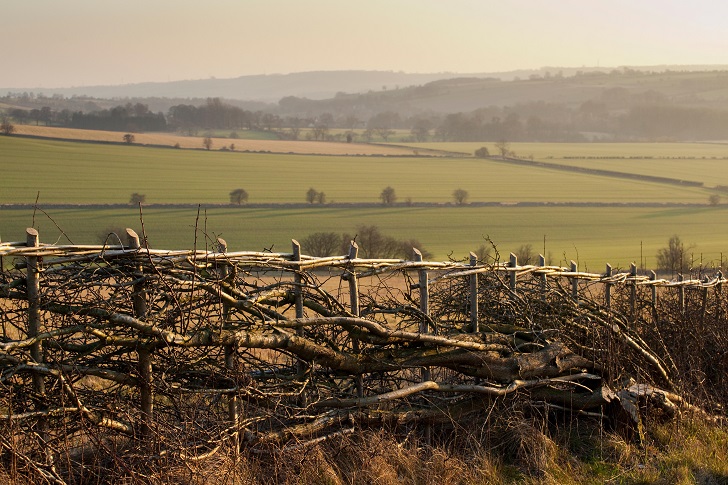
If you have the good fortune, as I had when I visited Lincolnshire in October 2014, of attending the National Hedgelaying Championships, you will see that hedge preservation is as much about love and pride as it is about economics. Weaving the warp and weft of different regions through the half-felled and pleached trees and shrubs creates lines of beauty that have the potential to grow into lines of life.
Wild wonders
These ‘life lines’ are a wonder. When you start to look closely you will find a diversity of life to startle. Robert Wolton’s now-famous study of a Devon hedge on his land gives the raw data to support the instinctive love we feel for these lines. Just an 85-metre stretch revealed over 2,000 different species during two years of study. And these were only the ones he could see with the naked eye, and were actually seen on or in it – so the sparrowhawk and the tawny owl, both resident on his land, but not seen landing on the hedge or its supporting cast of trees, failed to make the cut.
Such diversity comes from the very nature of the hedge; it is an edge, a woodland edge; the richest part of the wood is where it plays with the meadow. The security of the trees, with the light of the field. But the value is in far more than being a habitat.
Back in 2010, Professor Sir John Lawton produced the government white paper, Making Space for Nature. He argued that there needed to be more, better and larger nature-rich areas. So far, so predictable; but what became known as the Lawton precepts included a fourth – that these areas should be joined up.
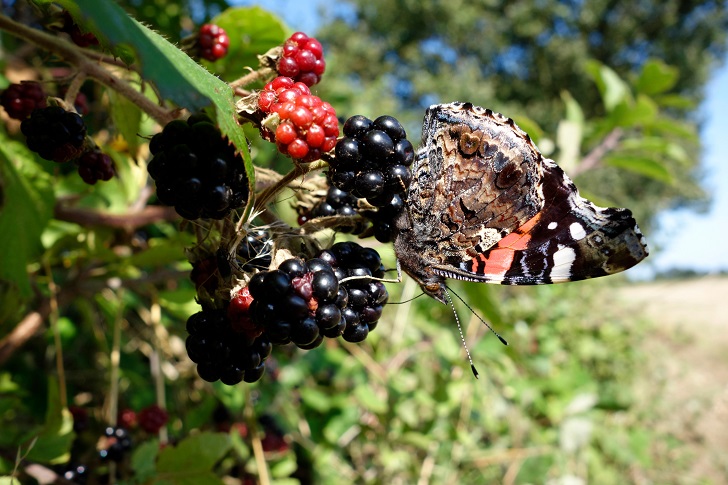
The paper helped inspire my own fascination with ‘linescapes’; how the linear features we have created (hedges, ditches, walls, railways, roads) impact nature. How each line can be either a corridor along which life can flourish or a barrier, creating fragmentation and piecemeal extinctions.
And of these, it is the hedgerow that I find most compelling – and at times, depressing, because we have lost so much. We need 200,000 miles of hedgerows to be replanted to get us back to ‘peak hedge’. And of the 300,000 miles we still have in the UK, over 60% are not in ‘favourable condition’ and need to be repaired by plugging the gaps. We need ‘hedgerow heroes’ to step forward. We need those who manage the land to be given support to retain these vital habitats.
One such custodian is Edward Darling of Greys Farm in Hertfordshire, who founded the Redlist Revival initiative to help landowners take responsibility for threatened species. ‘It takes a huge effort to create, protect and enhance nature,’ he says. ‘New hedgerows need a lot of nurturing just to survive, and then a lot of managing to provide the diversity of habitats we need. It’s a war of attrition. But boy, they look stunning when they flourish. The value of our hedgerows has been overlooked for far too long.’
Urban hedges
The hedge is not an exclusively rural affair, of course. Though most urban hedgerows are a sorry affair of limited diversity, they are not without value. Where else will you find an extended sparrow family in vigorous debate about the state of the world? Even the most monocultural line of privet can provide a home.
Neil Sinden, director of CPRE London – one of many CPRE groups that have been helping restore or replant hedges – is clear on the importance of these urban hedgerows. ‘Of course, they provide nature with a habitat in often quite inhospitable environments, but we should not forget the important role they place in reducing the impact of noise and air pollution on us all; we want to retain the old and plant new ones to improve the environment for people and nature.’
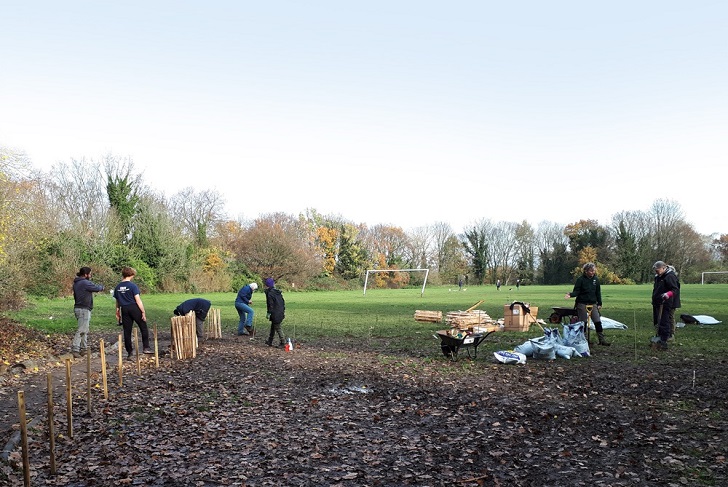
‘The older hedgerows have further value,’ Neil adds, ‘in that they reveal the landscape beneath, reminding us of an area’s rural origins before neighbourhoods were developed and houses built.’ He is right. The Phoenix Hedge, for example, is an 800-year-old relict that was uncovered in Bristol and is now cherished by locals, proud of the fact that they have one of the oldest hedgerows in the country on their doorstep.
And near where I live in Oxford, the affectionately named ‘poo path’ (thank you to all the responsible dog owners who seek to make this nickname redundant!) is bordered by two hedges that keep the children of two schools in check. These same hedgerows are visible on old maps, as they border a path through farmland, while the hops that weave through another hedge near me are probably a relic of the formerly farmed land.
Old hedgerows in our towns and cities are largely overlooked and seriously need protection. Again, they need heroes and advocates: people who will notice when the developer has shrouded a hedgerow in netting in an attempt to stop birds nesting, so as to make its destruction less troublesome.
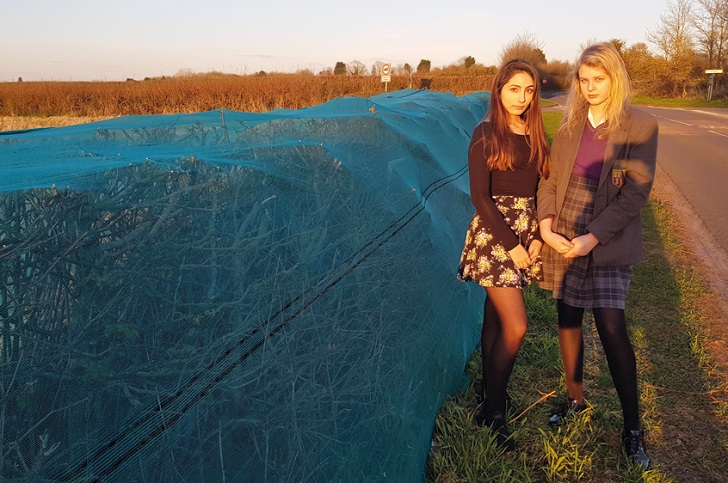
Two such amazing hedgerow heroes are Kyra and Sophie, schoolgirls who run the rescue service Hedgehog Friendly Town in Stratford-upon-Avon, and have also been impressive campaigners against the netting of hedgerows. ‘When we saw nets covering a hedge near us we could see that hedgehogs and other wildlife could get trapped,’ says Kyra. Sophie adds, ‘We got in touch with our local councillor and ended up having a meeting with the developers, who have promised to become more responsible hedge managers.’ Not all developers are so receptive, however.
CPRE recently responded to a consultation on changes to planning policy by proposing a presumption against hedgerow removal, citing their importance to nature and calling for new hedgerows to be incorporated within housing schemes.
Hedgerows for humans
Whether it is a newly planted hedge to help heal a development, a garden hedge that houses a cacophony of sparrows, or one of the ancient lines that knit our land together, the hedgerows of this country are deeply special. We know that they provide immense ecological good. From biodiversity to climate change, they provide a balm to many of the ills of the world.
But they also help us by bringing nature closer to us. A walk along a rural or urban hedge gives us that connection: the dunnocks scurrying like feathery mice, the pipistrelles dipping to pluck another midge from the air, the brambles getting ready to send us into an autumn of crumble heaven; primroses and dog roses, elder and spindle.

It is well understood now that any connection with nature is, quite simply, good for us. Physically and psychologically, we are fitter and happier people for it. And the hedgerow brings a boost of nature wherever it is allowed, bringing the woodland to the meadow, the meadow to the woodland – and the countryside to our towns and cities.
Hugh Warwick is an ecologist, writer, public speaker and the author of books including A Prickly Affair (Penguin) and Linescapes: Remapping and Reconnecting Britain’s Fragmented Wildlife (Vintage). In 2018, Hugh was ‘Minister for Hedgerows and Verges’ in Chris Packham’s People’s Manifesto for Wildlife.
Find out more about CPRE’s hedgerow campaign and sign our petition calling for a 40% increase in the UK’s hedgerow network by 2050.
This article was originally published in CPRE’s award-winning magazine, Countryside Voices. You’ll have Countryside Voices sent to your door three times a year, as well as access to other benefits including discounts on attraction visits and countryside kit from major high street stores when you join as a CPRE member. Join us now.
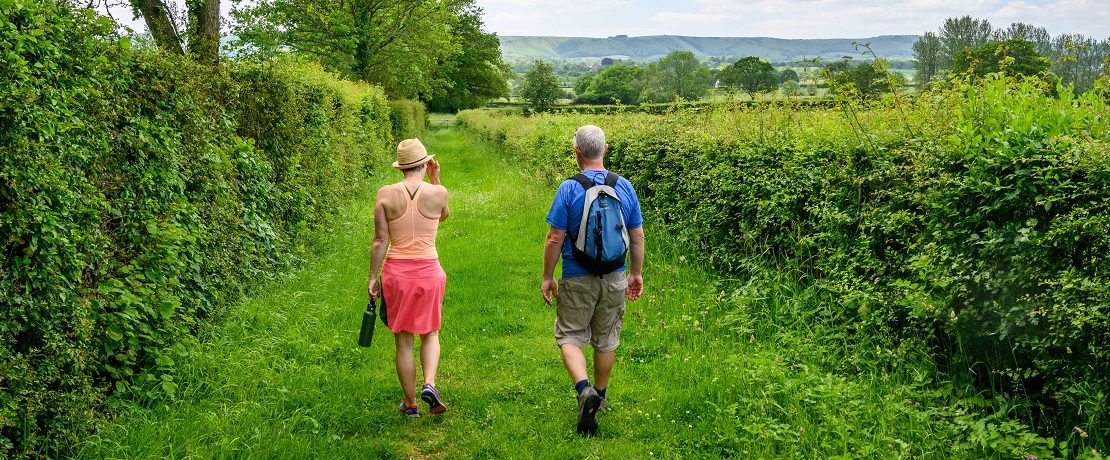




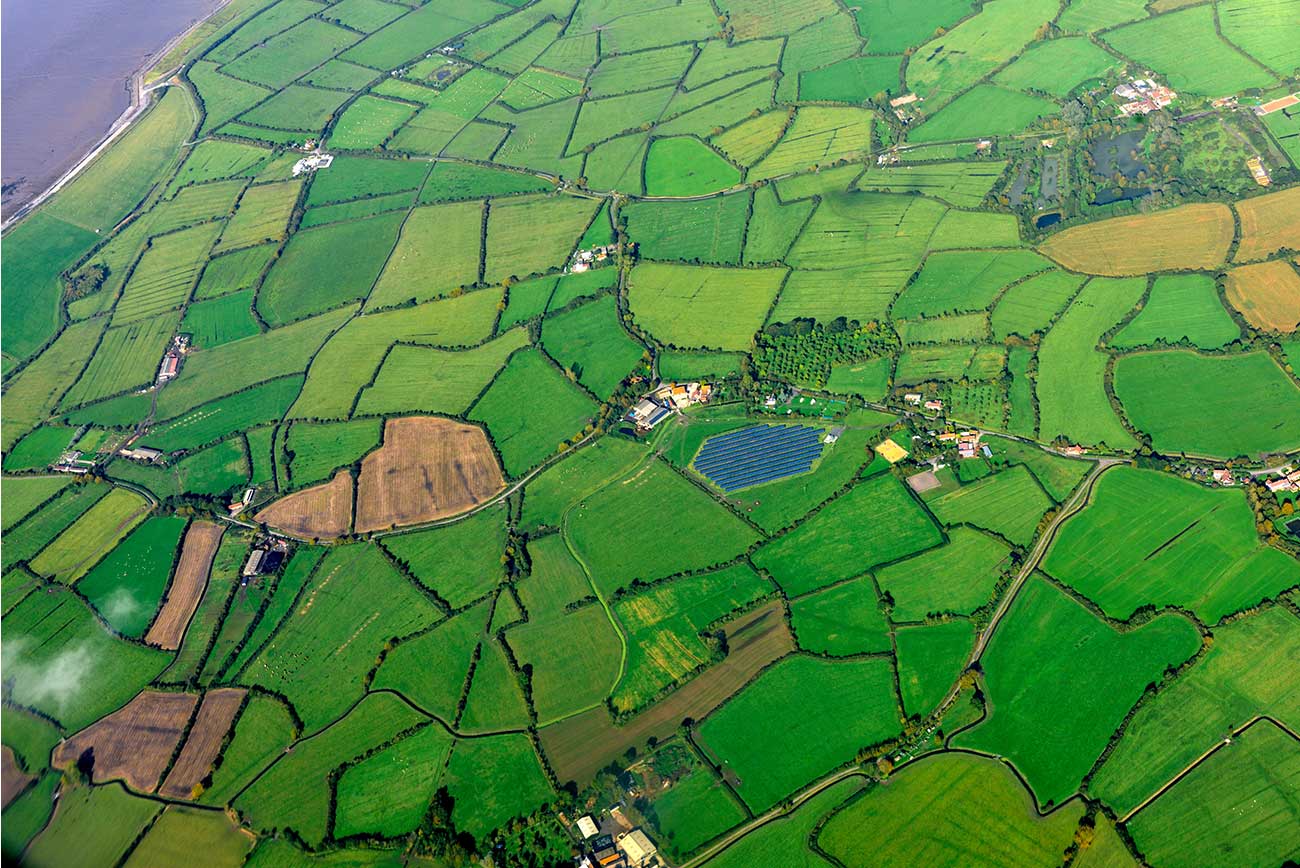
 10 min read
10 min read 